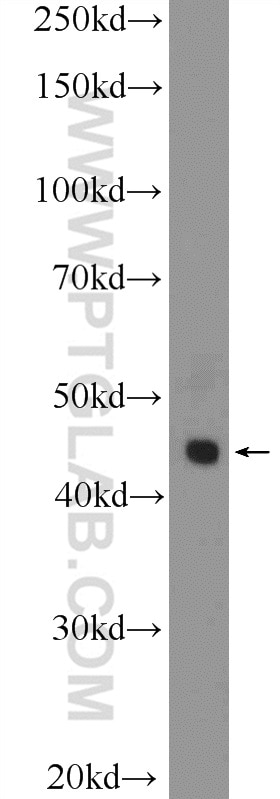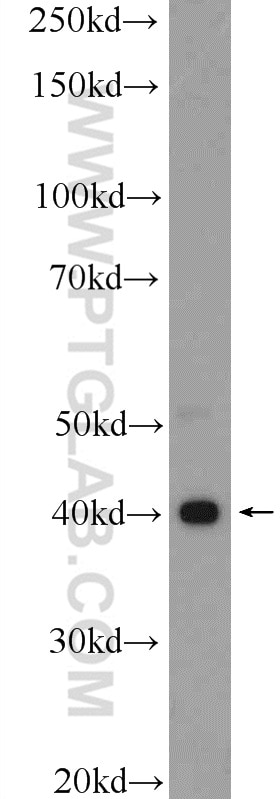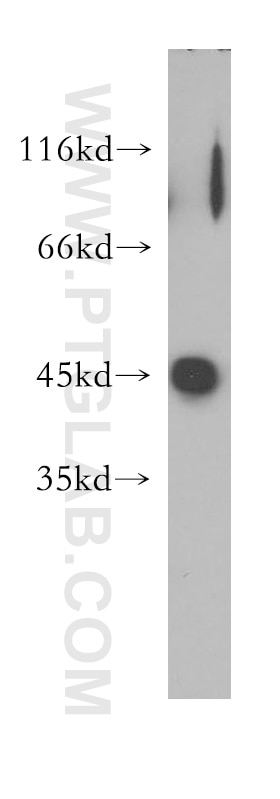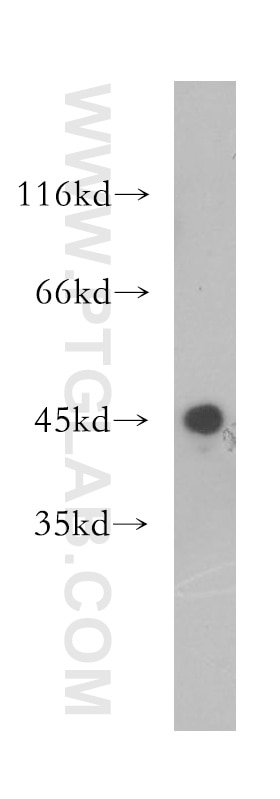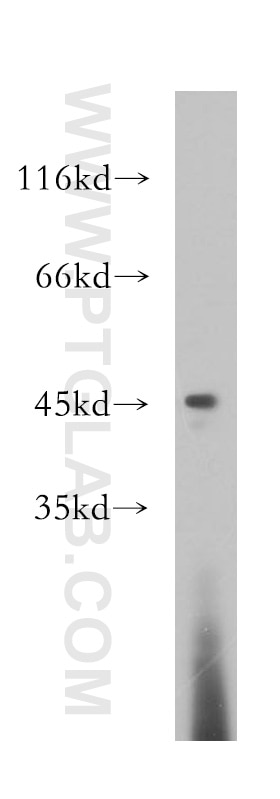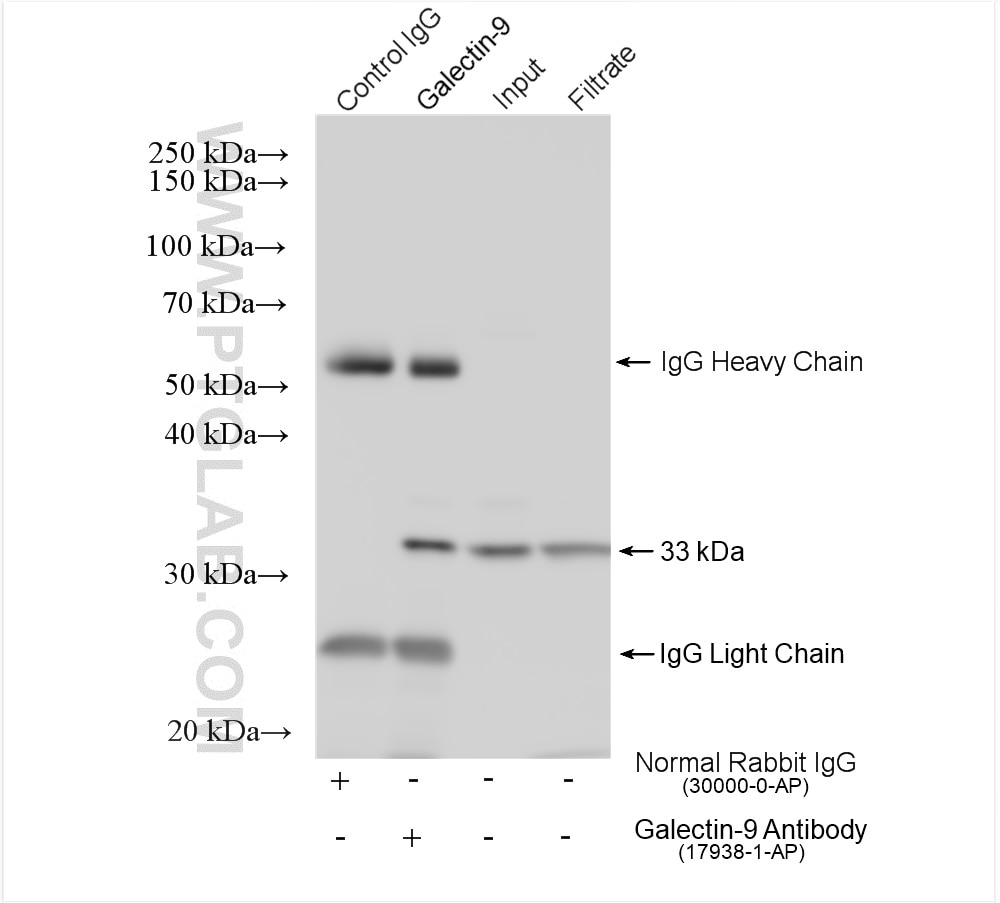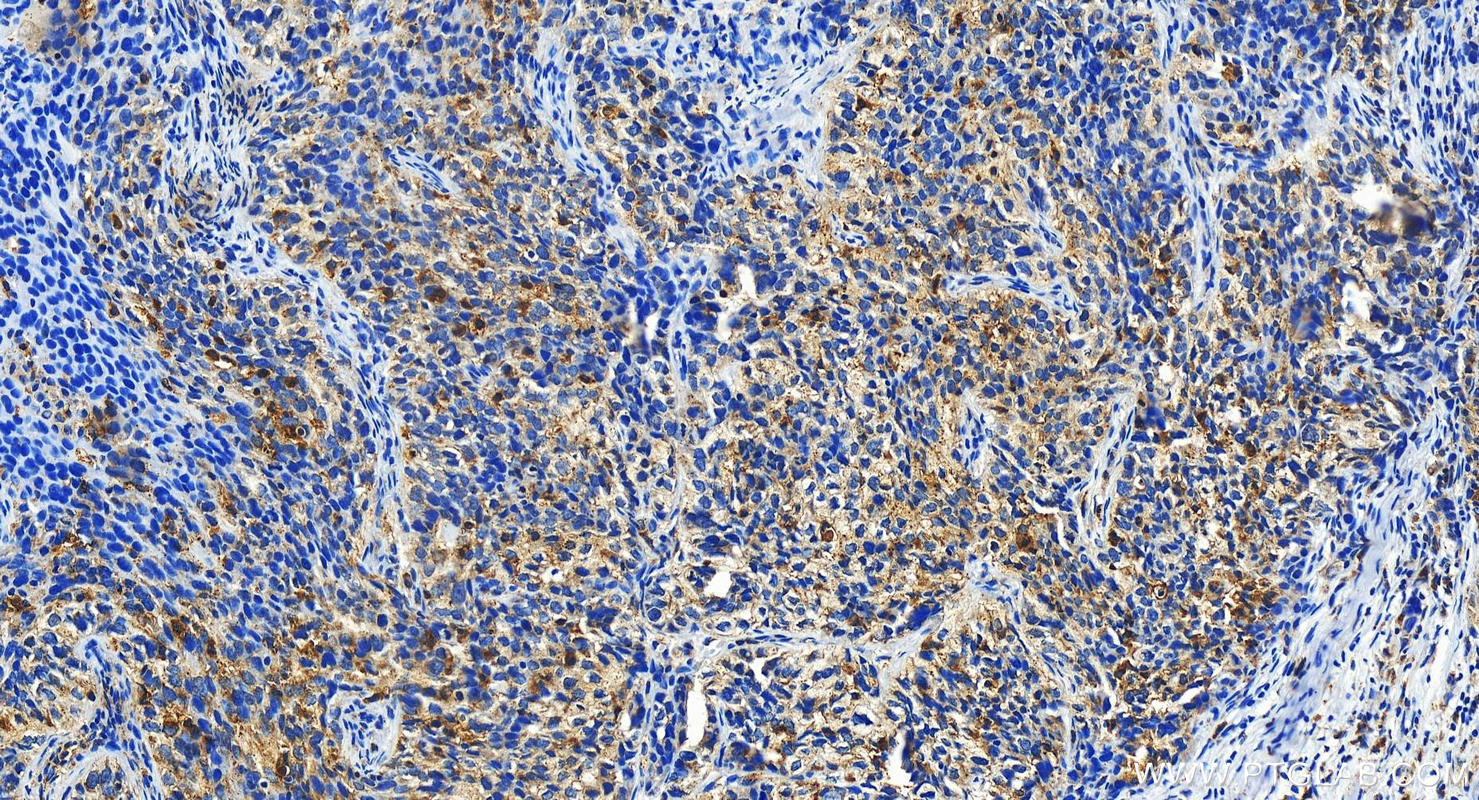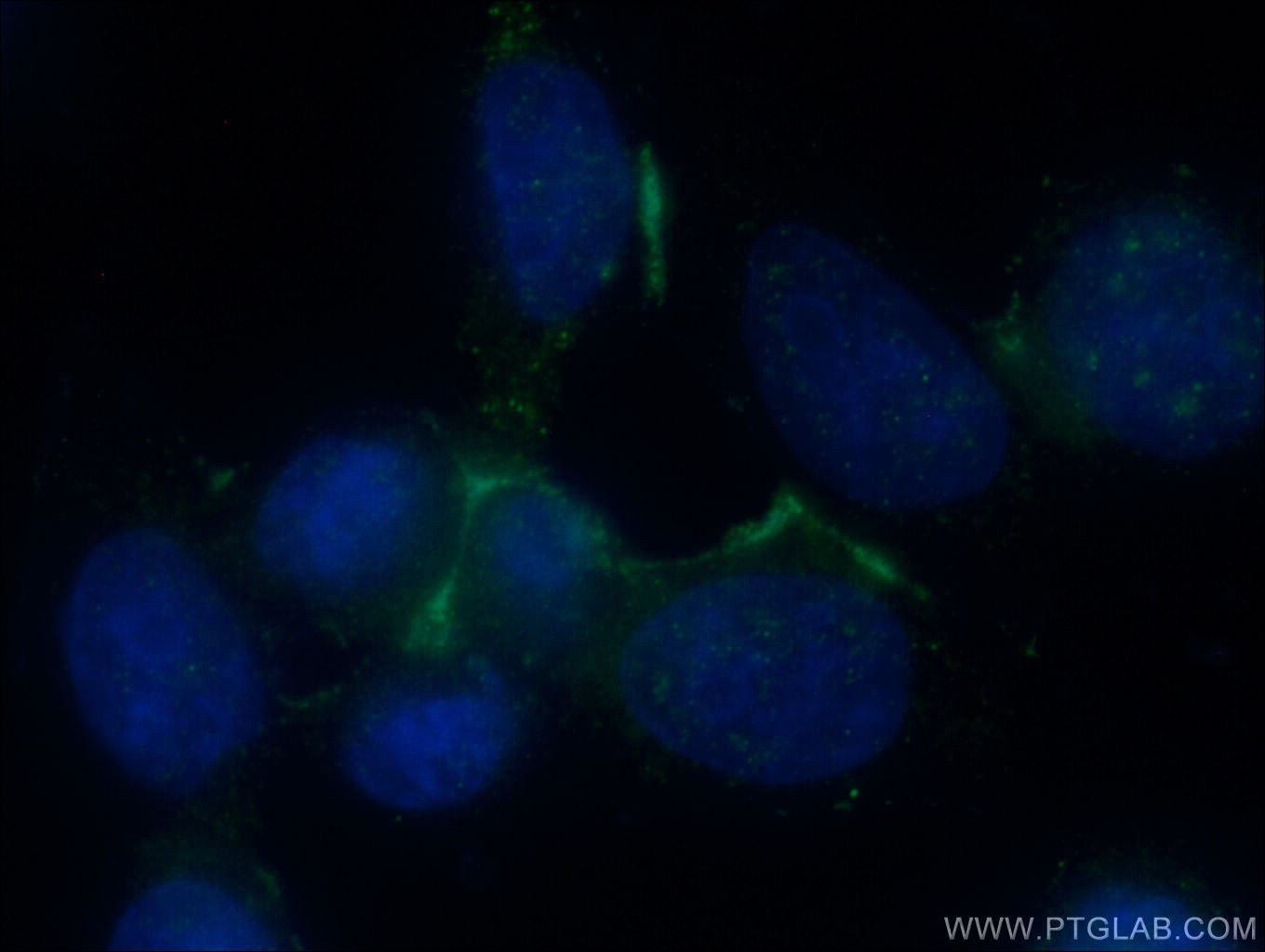Validation Data Gallery
Tested Applications
| Positive WB detected in | U-937 cells, HeLa cells, HepG2 cells, HL-60 cells, SGC-7901 cells |
| Positive IP detected in | U-937 cells |
| Positive IHC detected in | human ovary cancer tissue Note: suggested antigen retrieval with TE buffer pH 9.0; (*) Alternatively, antigen retrieval may be performed with citrate buffer pH 6.0 |
| Positive IF/ICC detected in | HeLa cells |
Recommended dilution
| Application | Dilution |
|---|---|
| Western Blot (WB) | WB : 1:500-1:1000 |
| Immunoprecipitation (IP) | IP : 0.5-4.0 ug for 1.0-3.0 mg of total protein lysate |
| Immunohistochemistry (IHC) | IHC : 1:50-1:500 |
| Immunofluorescence (IF)/ICC | IF/ICC : 1:50-1:500 |
| It is recommended that this reagent should be titrated in each testing system to obtain optimal results. | |
| Sample-dependent, Check data in validation data gallery. | |
Published Applications
| KD/KO | See 1 publications below |
| WB | See 14 publications below |
| IHC | See 8 publications below |
| IF | See 1 publications below |
| IP | See 1 publications below |
Product Information
17938-1-AP targets LGALS9/Galectin-9 in WB, IHC, IF/ICC, IP, ELISA applications and shows reactivity with human samples.
| Tested Reactivity | human |
| Cited Reactivity | human |
| Host / Isotype | Rabbit / IgG |
| Class | Polyclonal |
| Type | Antibody |
| Immunogen | LGALS9/Galectin-9 fusion protein Ag12209 相同性解析による交差性が予測される生物種 |
| Full Name | lectin, galactoside-binding, soluble, 9 |
| Calculated molecular weight | 323 aa, 36 kDa |
| Observed molecular weight | 45 kDa |
| GenBank accession number | BC110340 |
| Gene Symbol | Galectin-9 |
| Gene ID (NCBI) | 3965 |
| RRID | AB_2137233 |
| Conjugate | Unconjugated |
| Form | Liquid |
| Purification Method | Antigen affinity purification |
| UNIPROT ID | O00182 |
| Storage Buffer | PBS with 0.02% sodium azide and 50% glycerol , pH 7.3 |
| Storage Conditions | Store at -20°C. Stable for one year after shipment. Aliquoting is unnecessary for -20oC storage. |
Background Information
The galectins, formerly known as S-type lectins, are a family of β-galactoside-binding proteins implicated in modulating cell-cell and cell-matrix interactions. Galectin-9 (LGALS9) is a tandem repeat-type member of the galectin family. It has three isoforms (named galectin-9L, galectin-9M, and galectin-9S): long type of 355 amino acids, medium type of 323 amino acids, and short type of 311 amino acids. Galectin-9 is ubiquitously expressed in a variety of tissues, including lymph nodes and spleen, and overexpressed in Hodgkin disease tissue. It is involved in chemoattraction, apoptosis, and the regulation of cell differentiation and has anti-allergic effects. It has been reported that galectin-9 is a ligand for Tim-3, through which galectin-9 can induce T-helper type 1 lymphocyte (Th1) death.
Protocols
| Product Specific Protocols | |
|---|---|
| WB protocol for LGALS9/Galectin-9 antibody 17938-1-AP | Download protocol |
| IHC protocol for LGALS9/Galectin-9 antibody 17938-1-AP | Download protocol |
| IF protocol for LGALS9/Galectin-9 antibody 17938-1-AP | Download protocol |
| IP protocol for LGALS9/Galectin-9 antibody 17938-1-AP | Download protocol |
| Standard Protocols | |
|---|---|
| Click here to view our Standard Protocols |
Publications
| Species | Application | Title |
|---|---|---|
Cell Rep Med Lnc-H19-derived protein shapes the immunosuppressive microenvironment of glioblastoma | ||
Front Mol Neurosci Galectin-9/Tim-3 pathway mediates dopaminergic neurodegeneration in MPTP-induced mouse model of Parkinson’s disease | ||
J Nutr Biochem Isothiocyanates attenuate immune checkpoint blockage therapy in gastric cancer via induction of PD-L1 expression | ||
Front Immunol Galectin-9/TIM-3 as a Key Regulator of Immune Response in Gliomas With Chromosome 1p/19q Codeletion. | ||
Stem Cell Res Ther Mesenchymal stem cells alleviate experimental autoimmune cholangitis through immunosuppression and cytoprotective function mediated by galectin-9. |
